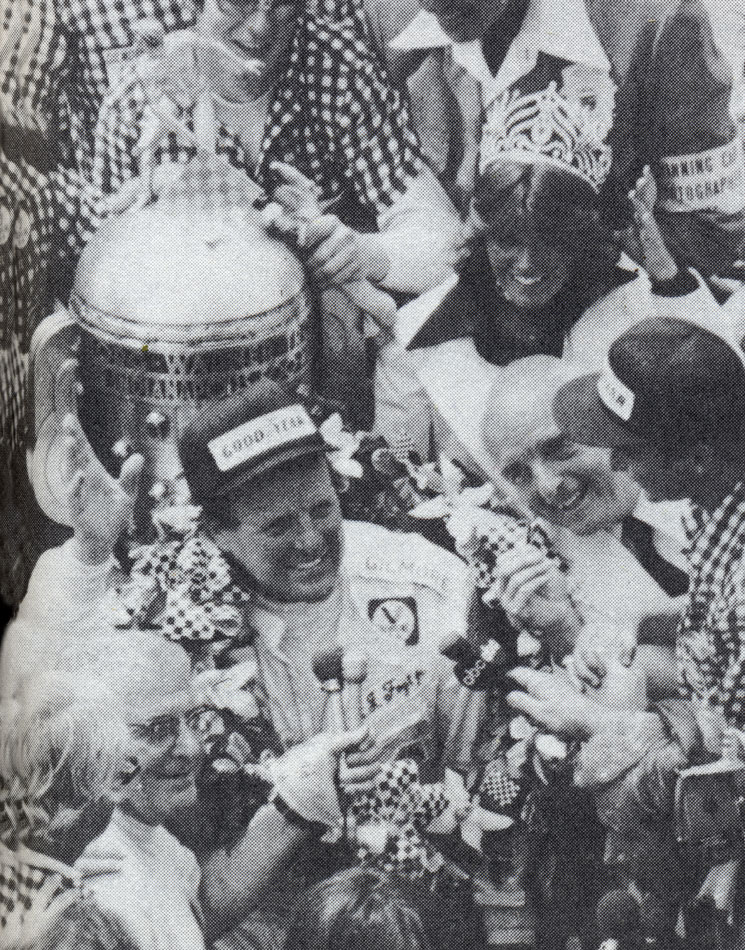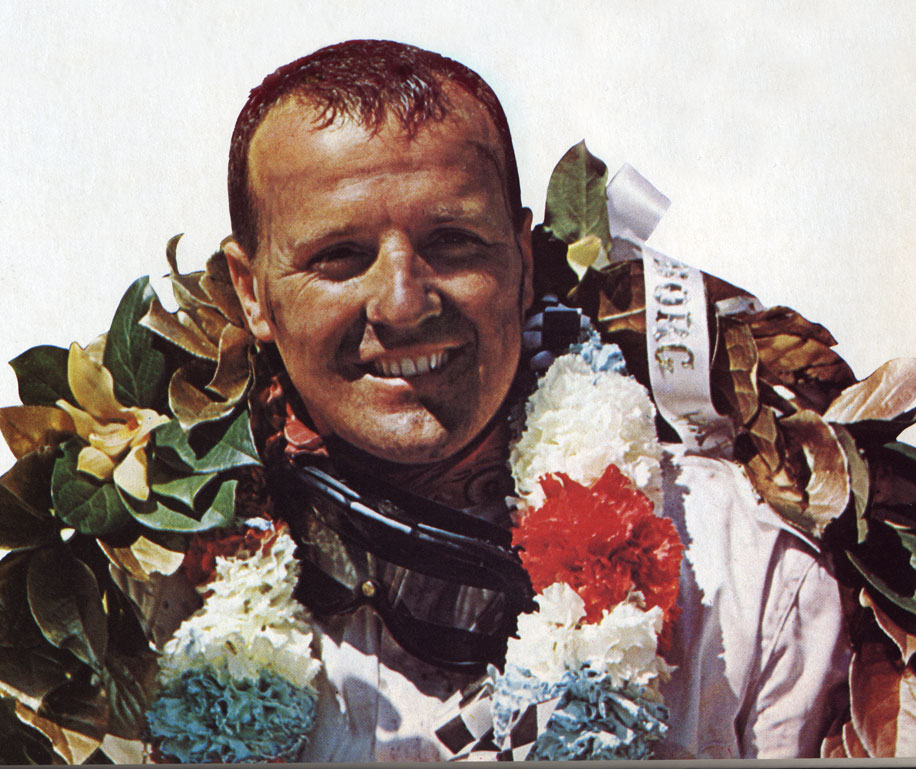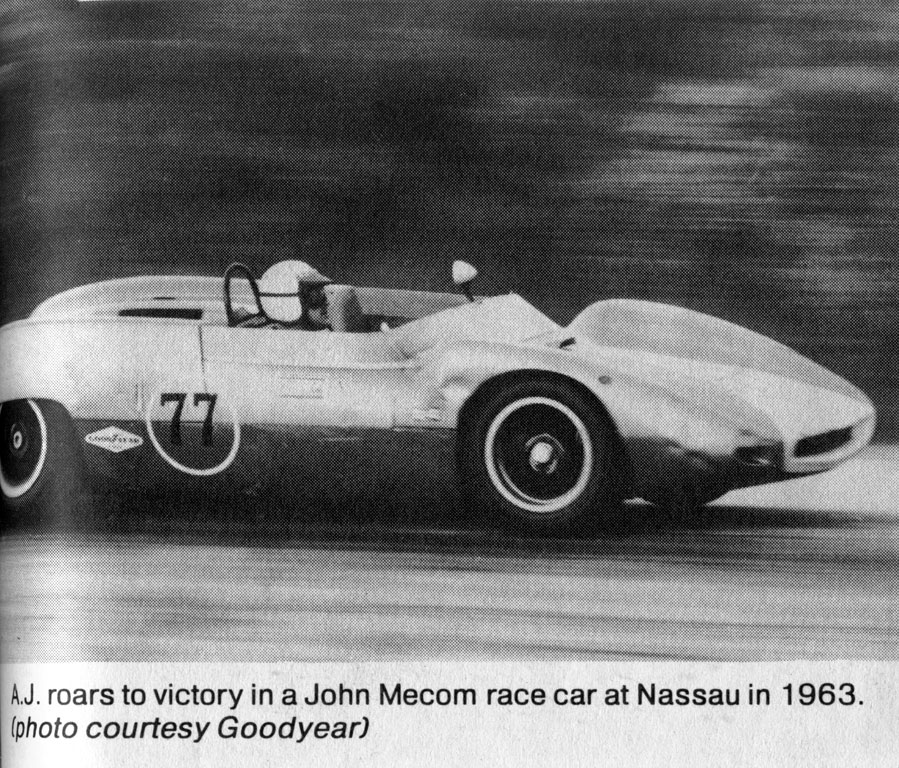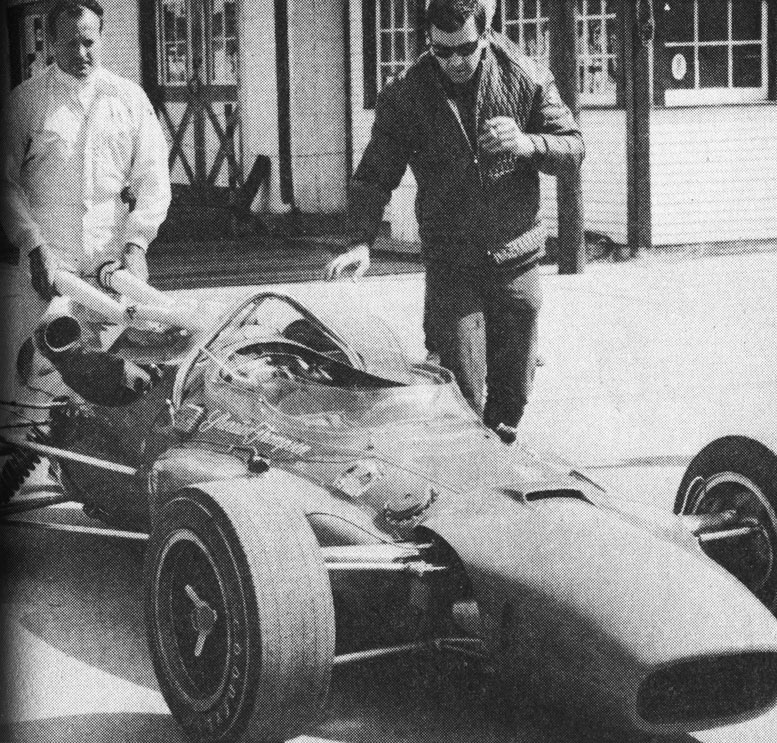
.
A.J. Foyt — The Life Of America’s Greatest Race Car Driver, Excerpts from the Book
From the book A.J. — The Life of America’s Greatest Race Car Driver written by A.J. Foyt with William Neely copyright 1983 published by Warner Books Inc, NY, NY. Chapter 6 “The Good Years…” pages 166 – 171.
.
I had conquered Indianapolis. In the history of the race only six drivers had won it more than once Tommy Milton, Louis Meyer, Wilbur Shaw, Mauri Rose, Bill Vukovich, and Roger Ward. The next step I told myself was to the three-time winner plateau that would eliminate half of the six.
I won a record of 10 championship races that year, which ran my grand total to 28, and all time record. I did it in only five years. Ralph DePalma had won 26, which took him 20 years to do, and Roger ward had 25, which took 13 years.
I felt it was time to take on the best in stock car racing ; NASCAR, the National Association for Stock Car Auto Racing. What it really means is balls-out racing from wire to wire in a big American sedan that they call a stock car, which of course is about as far from stock as I am a chess champion.
The guys who drive NASCAR are legends, too. Many of them got their start running moonshine on some back Southern road at night, with a car load of cops chasing them flat out. As NASCAR is done mostly in the south, because that’s where all the wild drivers come from – from the hills of the Virginias and the Carolinas. They always sounded like my kind of race drivers, so what better way to celebrate the Fourth of July than to race against them?
When I got to Daytona, which is the Indianapolis of stock-car racing, I found out that everything I had heard was true. They were harder charging than most of the Indianapolis drivers. More than that, they raced every weekend, and that’s tough. They all know each other’s driving style like they knew their own. I didn’t. But I knew my own. That had to be a good start.
Another thing I noticed about those guys is that they played as hard as they drove. I mean, they went out and drank and raised hell all night and then got in the race car the next day and went like crazy. I couldn’t understand how they could even stand to listen to a race car with a hangover, let alone drive one.
There was a place called Robinsons, where the race crowd went to drink. Two of the top NASCAR drivers, Curtis Turner and Joe Weatherly, had an apartment across the street and they rented it at race time. One night somebody asked Curtis why they stayed over there. “It isn’t exactly the best apartment in Daytona, you know,”the guy said.
“I know that,” Curtis said. “but I figure the worst that can happen to me is that somebody might step on my fingers.”
Curtis had an airplane. He flew the plane around about like he drove his car, flat out all the time. Curtis and a friend were up flying one day – flying and drinking, I might add – and they ran out of bourbon, so Curtis said, “Don’t worry ’bout it, pal; that’s Gaffney, South Carolina down there and I’ve got a friend that runs a bootleg business out of the back of his restaurant. We’ll just fly down there, land this little ol’ plane, and get us another jug. Hell, we’ll be back in the air before anybody sees us.”
Sounded logical to the other guy. But what they didn’t know was that there was a Little League baseball game being played right next to his friends restaurant. And Curtis’s planeis wasn’t exactly a “little ol’ plane”. It was a twin-engine Aero Commander. We had to fly under a power line to land. Just as they ready to touch down, Curtis noticed the line of traffic coming from the ball game. He pulled it back up and got out of there, but he knew somebody had to get the numbers on the on the underside of his wing.
They flew all the way back to Charlotte about 50 feet off the ground, so the radar wouldn’t pick them up. And instead of going to the Charlotte airport, They went to little strip at Concord, a few miles away. When Curtis radioed in to the man in the one-man tower, he garbled his numbers; you know, this is N-murf-mrf, grumf, murrf, requesting landing instructions.” He didn’t want them to find him because he knew he would lose his pilots license.
The voice of the other and said it’s no use Curtis they’re looking for you all over the South.”
These were the guys I would be racing against in NASCAR. And I was eager to watch some of them run, like Richard Petty, David Pearson, and drivers would been making the kind of name for themselves in stock car racing that I had at Indy. I wanted to beat them. I have taken on the old-timers at Indy-and the newcomers-and I have beaten them. And I like the view from the top.
It was supposed to be a big Mopar year. “Mopar” stands for Chrysler products Dodge and Plymouth. They were strong because of their Hemi engine, which was a whole lot better than anything else around the stock circles because of it special combustion chamber, which gave it its name.
I had a Ray Nichels-prepared (Race-Hemi 1964) Dodge, so I knew the car was competitive. But I knew it was going to be tough competing against the Southern drivers who raced every week. They knew the tracks and they knew each other. And they weren’t at the slightest bit impressed with the fact that I was a two-time Indianapolis winner and USAC champion. Their champion was Richard Petty, and they had USAC drivers come down before to take over. It hadn’t worked.
But we gained a mutual respect for one another. They have the right idea about racing; I’ll say that. They were loose and relaxed, but when they got in a race car, they were flat serious. “The bullshit stops when the green flag drops” was there motto.
Joe Weatherly came up with the best line I’ve ever heard about spinning a race car. He came out of the fourth turn and got a little sideways. He gathered it up some, but the car started to slide the other way, then back to the way it started. It went back-and-forth down the straightaway, first one way and then the other, but by the time he got to the first turn, he didn’t have it gathered up all the way, and he hit the wall. He was walking back to the pits and a reporter asked him what had happened – there’s always someone around to ask dumb-ass questions like that. “I got behind on my steering” Joe said.
But it was Fireball Roberts who put one of the reporters in his place. Same situation, probably the same reporter. “What happened out there, Fireball?” He asked. “I crashed; that’s what happened out there. It is possible to crash, you know” he said.
They talked a lot about cheating and NASCAR, like the time Cotton Owens showed up at Atlanta with the Grand National Stock car-those are the fast ones. Well it turned out that the car he had built was faster than anybody else’s. Much faster. NASCAR officials went over the car with a fine tooth comb. They waited they were under it over inside. I took the engine apart, but they couldn’t figure out why it was so much faster. They were restrictions, but the car seems to meet everyone of them. David Pearson as a driver help, but not that much.
Finally somebody remember the templates. They use exact-scale metal brackets, patterned from showroom cars. They slip up template over the car, just to make sure the drivers haven’t lowered them. That’s the only reason; just a guard against lowering the cars. They put it over Cotton’s car, and everybody looked on in amazement. What they were looking at was a perfect seven-eights-scale race . Cotton had built the body. A size smaller. Because of that, the car and less frontal area, and less wind resistance. It went faster. But the work that went into the project must have been something like building the pyramids. It almost worked.
Another time, Smokey Yunick showed up at Daytona with one of his creations, which Curtis Turner was going to qualify. NASCAR rules say that you can cut out the fender openings to accommodate larger tires. But smoky hadn’t cut them out. The rest of the drivers Raised hell. “You have to cut them out,” they claimed.
“Nope” Smokey said. “The book says you can cut them out”
Curtis went out and turned the first 150-mile-an-hour lap at Daytona. The smaller wheel openings probably helped in the wind resistant department.
Then he cut out the wheel openings. More hell-raising. “You can’t do that” they all said.
“Sure you can,” Smokey said. “It says you can cut them out, but it doesn’t say when.”
When Smokey announced that the engine Curtis had set the track record with was just his back up engine, everybody almost fainted. “Wait’ll y’all see the race engine.” He didn’t have a race engine any stronger than that one, but he had them completely psyched out. And that’s part of the game.
But some of Smokey’s cars were flat suspicious. Once they accused him of having an extra fuel supply somewhere in the car. Again they went over every inch, but they couldn’t find a thing. They told him to take his car on back to the track. Curtis got in it and drove away. Later he came back when nobody was looking and got the gas tank they had forgotten to put back on.
“How’d that sumbitch run without the gas tank, Smokey?” Curtis asked in the garage area.
“Just gas in the carburetor, Curtis. That’s all,” he said.
Everybody but the NASCAR officials knew better. “Funny, but poor sportsmanship,” the newspapers said!
.
Like what you see & want more? Click for my post A.J. The Life Of America’s Greatest Race Car Driver — Part 2. Enjoy!
.

.



.
Excerpt from the book A.J. — The Life of America’s Greatest Race Car Driver written by A.J. Foyt with William Neely copyright 1983, published by Warner Books Inc, NY, NY
Pages 166 – 171.
.
